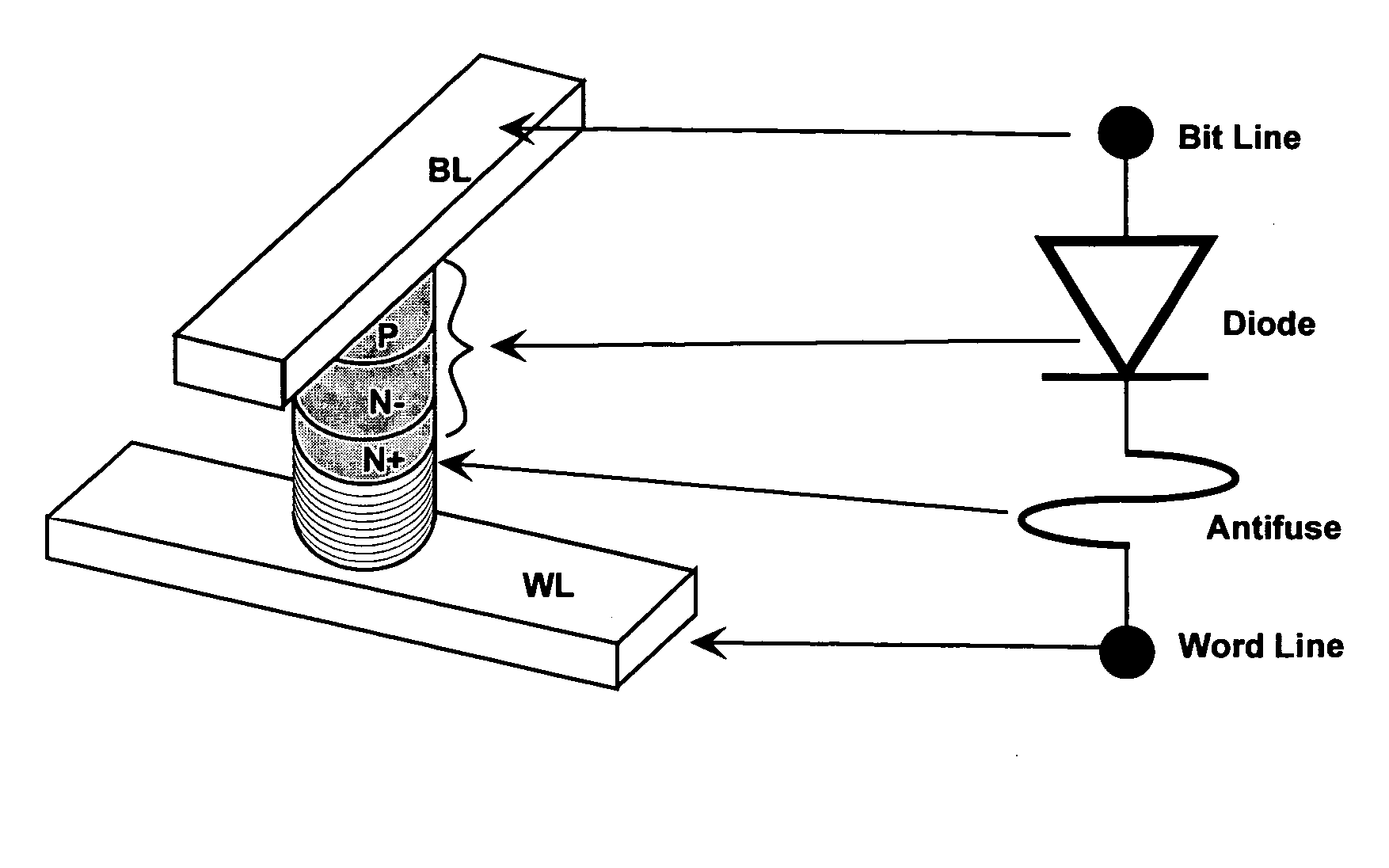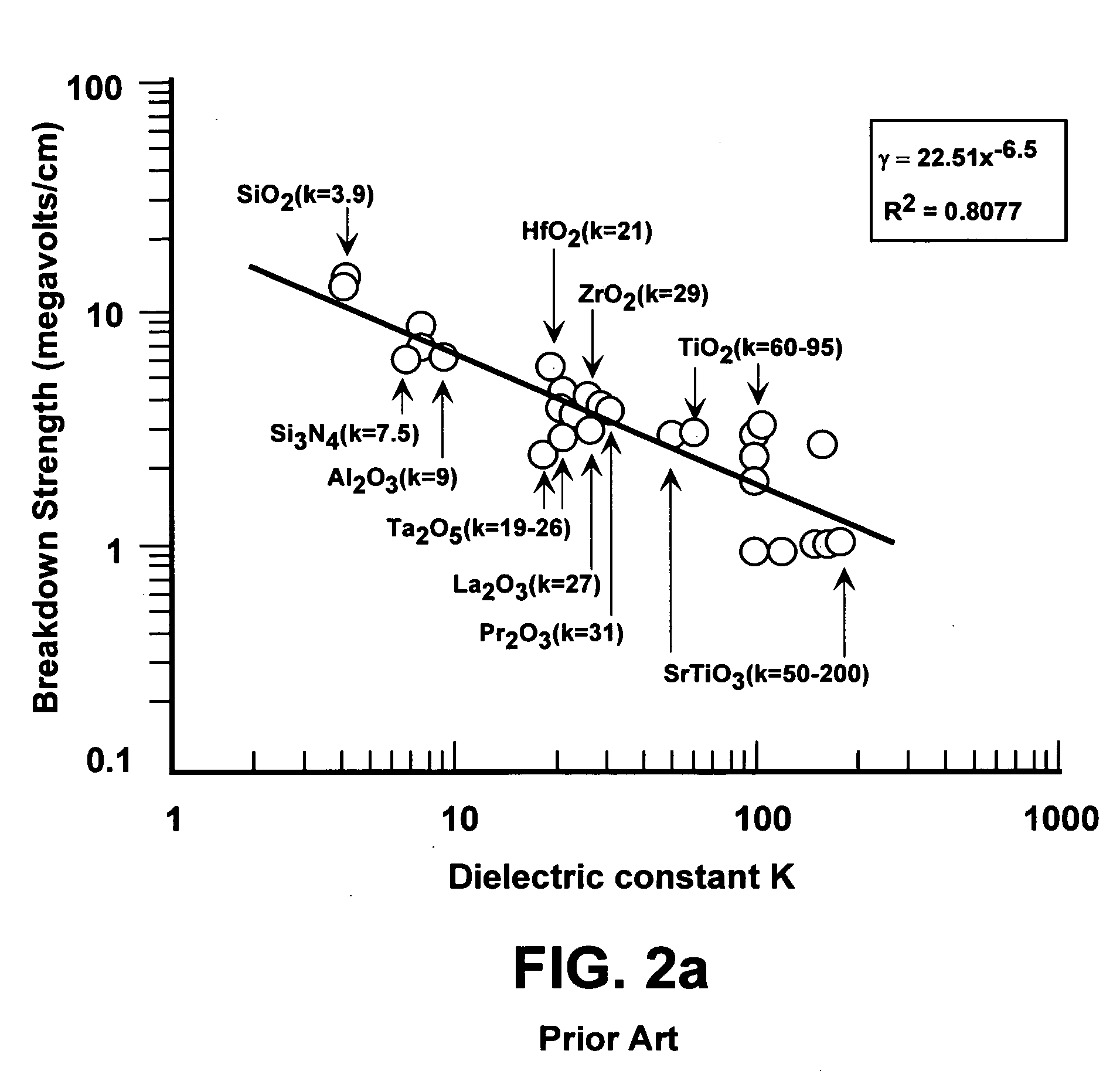Memory with high dielectric constant antifuses and method for using at low voltage
a memory and dielectric constant technology, applied in the field of nonvolatile memory array programming and reading, can solve the problems of antifuses and diodes made from films of silicon dioxide that have already been made just a few atoms thick, not to be made thinner, etc., to achieve low voltage, short antifuse, and reliable reading and writing
- Summary
- Abstract
- Description
- Claims
- Application Information
AI Technical Summary
Benefits of technology
Problems solved by technology
Method used
Image
Examples
Embodiment Construction
[0026] When developing improvements in integrated circuit memories, it is desirable to reduce the cost of manufacturing while improving operating speed, reducing power consumption, and maintaining a good useful lifetime of the devices. The present invention is directed to memory arrays in which memory cells are formed from a diode and an antifuse connected in series. Preferred embodiments orient the diode and antifuse in a vertical stack between word lines and bit lines.
[0027] A critical requirement for shrinking memory devices to deep submicron sizes is to reduce the voltage levels required to write and read the memory cells. For example, whereas the prior art programming voltage illustrated in FIG. 1 is about 9 volts, the present invention will allow programming in the range of 3 to 5 volts. Read voltage can similarly be reduced to about 1 to 1.5 volts. Reducing the required read and write voltages of the memory cells also allows shorter channel length CMOS devices to be used in ...
PUM
 Login to View More
Login to View More Abstract
Description
Claims
Application Information
 Login to View More
Login to View More - R&D
- Intellectual Property
- Life Sciences
- Materials
- Tech Scout
- Unparalleled Data Quality
- Higher Quality Content
- 60% Fewer Hallucinations
Browse by: Latest US Patents, China's latest patents, Technical Efficacy Thesaurus, Application Domain, Technology Topic, Popular Technical Reports.
© 2025 PatSnap. All rights reserved.Legal|Privacy policy|Modern Slavery Act Transparency Statement|Sitemap|About US| Contact US: help@patsnap.com



